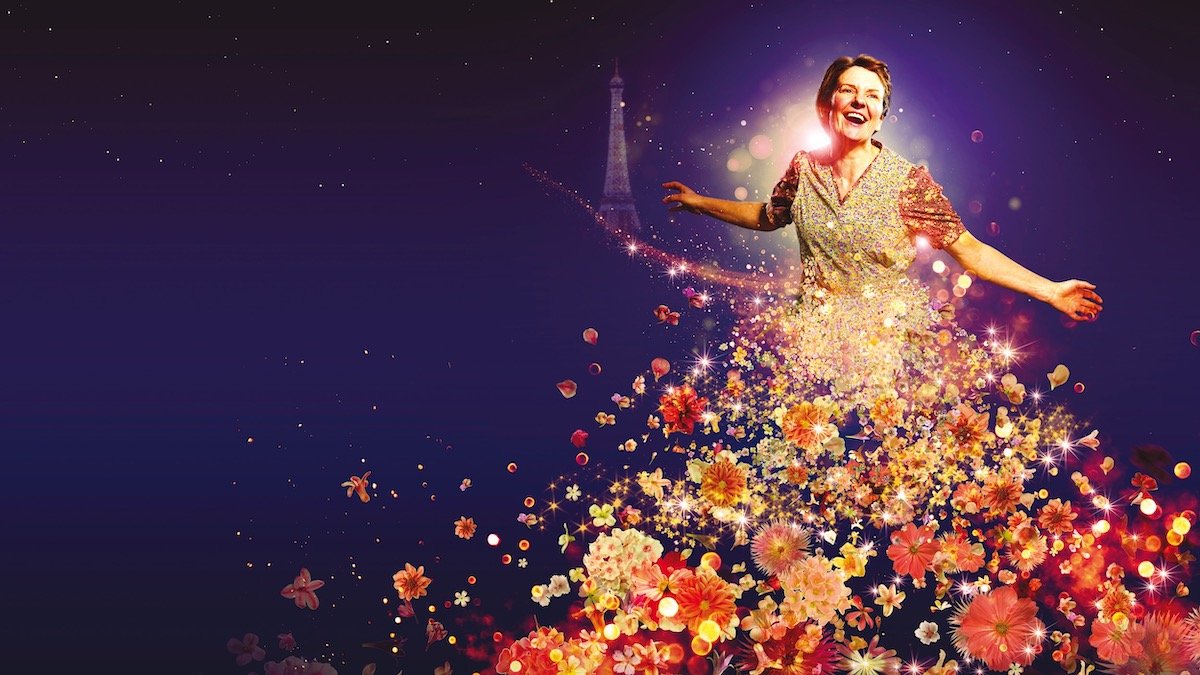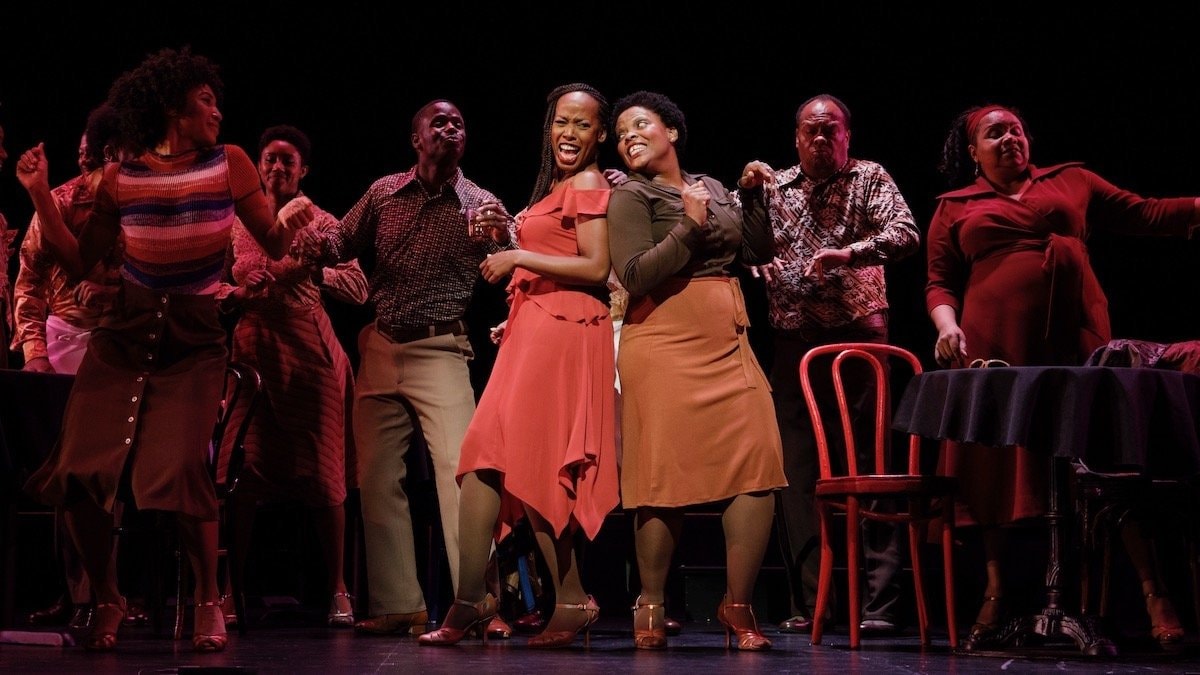
Flowers for Mrs Harris is a charming, life-affirming new musical that celebrates self-discovery and triumph over adversity. Here, the musical’s creators Rachel Wagstaff and Richard Taylor discuss adapting Paul Gallico’s novel for the stage, what makes the central character’s journey so powerful, and advice for those wishing to stage it.
…
RW: One of the first questions both producer Vicky Graham and our director, Daniel Evans, asked us: what is the show about? It feels far too shallow to allow or reduce it to be “Woman Wants Dress”. We kept returning to the thought that loss is written large into the novel. Something that struck a chord with both of us but something also at the heart of the human existence: how to carry on when the person or people most dear to you have passed on? Mrs Harris (like her best friend, Violet) has been a widow since the First World War. She has slaved away for years to pay her own way but all the while, never complaining, never dwelling on everything the war snatched from her. When she sees the dress, it is as if something locked away, deep within her, has been smashed open. A hunger for beauty, for joy, for something more than the drudgery of her hardworking existence: something to which she can come home. Once we understood that – that this was never really about a dress for Mrs Harris but was about her needing something or someone of her own, needing to matter, to contribute, to have beauty and colour in her life – we knew why we needed Mr Harris, and why this musical should still speak to people who (like me) have zero interest in fashion!
RT: Other characters, too, came and went, evolved and grew, stepped out of Gallico’s pages and then stepped back into them, unused. The hilarious dog race from the novel found its way into one workshop and then chased a hare over the horizon, barking, never to be seen again. Our own discovery, Nelly McGrail, a cleaner who won the football pools in 1957, seemed to be indispensable as Ada’s guardian angel for so many drafts, until she too, was sent away. So many peripheral events and characters… until we learned to have faith in the simplicity of the central story and point everything in the direction of Ada, her needs and her reasons, and the effect she has on people.
RW: I think that’s what caught us the most. This story is a celebration of an ordinary, “small” woman, who has absolutely no idea how extraordinary she is, both in her courage, of course, but also in her unfailing care for others. Mrs Harris helps everyone around her, almost unthinkingly. Every single character is transformed (for the better) by Mrs Harris, although she never asks anything of them. When they each learn of her loss towards the end, they all immediately recognise everything she is, and everything she has been quietly doing for them, whether in a single interaction or over many years. The unthanked, unsung heroine is finally not just appreciated but even visibly, powerfully and beautifully thanked. More than anything, she realises she actually matters. And that is more healing than any dress could ever be. Finally, Mrs Harris is able to let go of the tightly-held grief she has silently been living with, all these years.
RT: Which is also the moment she, too, can allow herself to sing the main theme that everyone else has sung up to that point – “Look at me!” – but she has never felt worthy of demanding such attention.
RT: To matters practical. The staging. Along with speech and song interweaving, we also quickly felt that time and place would be equally fluid. It would always be about what happens in the flat, the house, the mansion, or wherever the clients she cleans for live, rather than the need to see those environments on stage. Daniel Evans, our amazing director, encouraged this split-screen style, and delighted in it, and designer Lez Brotherston provided a deceptively open stage with a large revolve, allowing the storytelling to flow seamlessly. Lighting closed down the space and gave us walls and windows that vanished in an instant. Only when we arrive in Paris did the back wall open and allow a sweeping Dior staircase to come forward and dominate the stage, down which, and from under which, new entrances and exits could happen.
One area where we felt the audience couldn’t be allowed to merely imagine, were the Act Two dresses. In the first instance (Act One), when Mrs Harris sees the dress in Lady Dant’s wardrobe, we only see Ada’s reaction to the dress, rather than any dress itself (can any one dress adequately conjour the effect in us that we are witnessing it have on her?). But in Act Two designer Lez Brotherston provided a jaw-dropping parade of wonderment (winning a UK Theatre Award for Best Design). Nine dresses, based on Dior’s original New Look, rendered in sumptuous and exquisite detail, including a magnificent bright red La Rose, to provide the climax of the dress showing. Models were drawn from the local communities, and fair to say those girls didn’t want to part with their costumes after the run!
There are so many different ways to stage or produce any show and while we couldn’t comprehend a way of not seeing the dresses in our productions at Sheffield and Chichester, no doubt there could be a vastly stripped-down version, where all is conjured in and by Mrs Harris’s remarkable imagination. What matters most to us is that time and space are fluid, that locations co-exist, and that we feel Mrs Harris’s wonder and love and compassion for everything and everyone she sees. But however stripped down, I would say that any production does need flowers at the end!
RT: A final word about performances, from a musical perspective. Because of the seamless flow between singing and speaking it is vital each actor’s/character’s voice is singular throughout, bridging speech into song without apparent gear-change. There are moments in the score which of course call for unabashed, full throttle singing, but equally there are others when one might be almost not be aware whether a character is singing or in fact speaking. “Speaking on pitch”, I think one actor coined it. At the top of Music #3 Lady Dant only rhythm is notated for Violet’s first bars, allowing her to freely slip into singing. When pitches take over, however, please adhere to them. As long as the actor’s speaking register is in line with where they begin to sing, the transition will be smooth.
Learn more about licensing Flowers for Mrs Harris (UK). Buy the Acting Edition (UK).

The Truth Behind… The Normal Heart

Musical Revues

